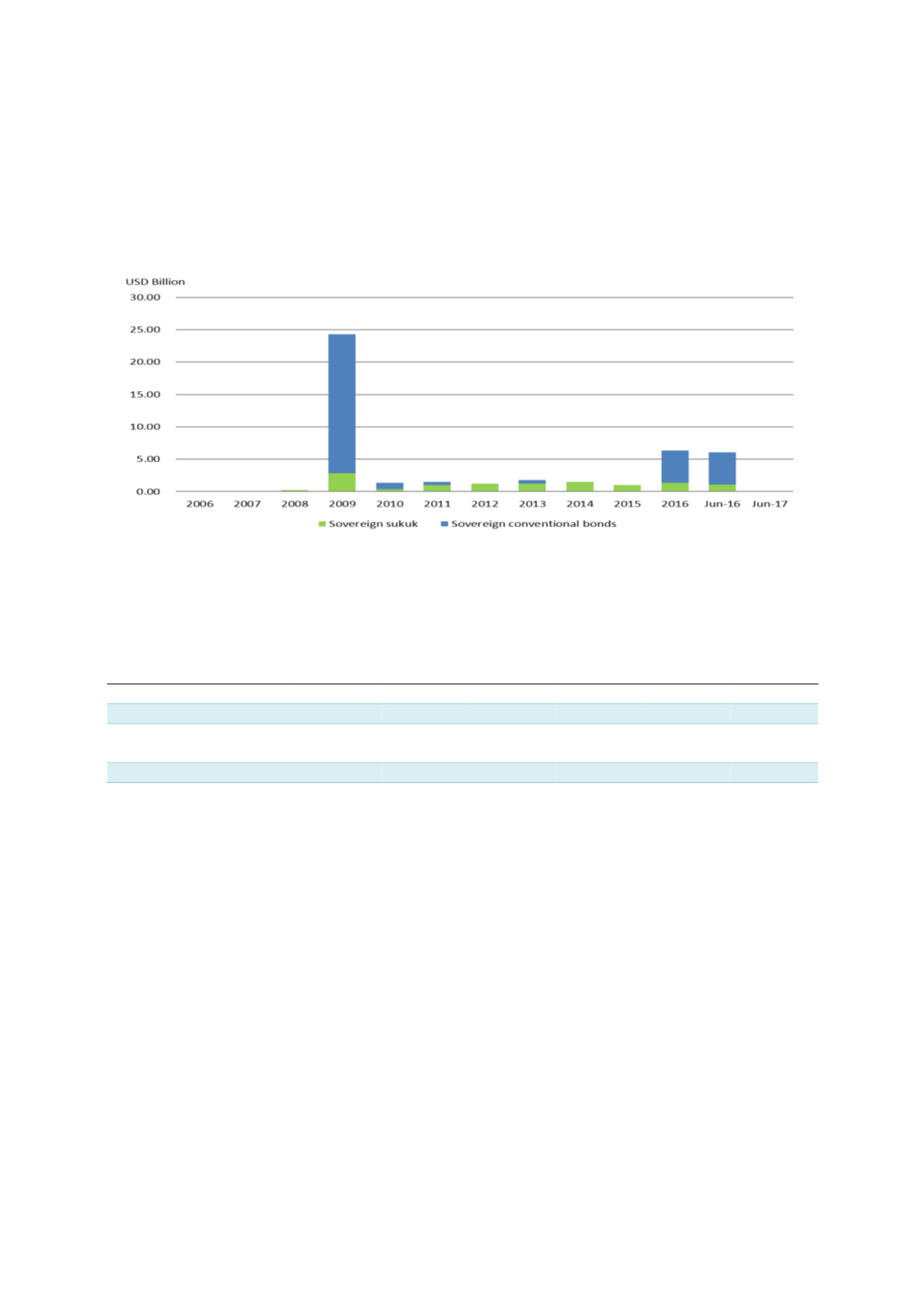

102
sized sukuk worth USD600 million (in 2012) and another valued at USD750 million (in 2013),
yielding a respective 6.45% and 3.875%. Chart 4.22 indicates total UAE sovereign sukuk
issuance in comparison to sovereign bonds as at end-June 2017.
Chart 4.22: UAE Sovereign Sukuk vs Conventional Issuance (2006-June 2017)
Source: Bloomberg
The plunge in global oil prices in 2015-2016 had slashed the UAE government’s revenue (refer
to Table 4.8), leading to the diversification of its funding sources, including international bonds
and sukuk, to finance its budget deficit.
Table 4.8: UAE’s Budget Deficits (2014–2017f)
AED billion
2012
2013
2014
2015
2016e*
2017f**
Government revenue
550.032
582.839
550.439
391.542
358.419
388.863
Government
expenditure
400.893
434.489
477.31
420.203
412.176
427.305
Budget deficit
149.14
148.35
73.13
(28.66)
(53.76)
(38.44)
Source: IMF
* IMF estimate
**IMF forecast
Since each emirate is autonomous in terms of managing its individual budget and raising funds
to finance budget deficits, the federal government has not issued any debt instrument.
However, the UAE government’s proposed (in 2017) federal debt-management law will allow
the federal government to tap the bond market; the latter is expected to issue sukuk in the
future. This is in line with the SCA’s newly launched development strategy (in October 2017)
for the UAE ICM, which includes the SCA’s role in updating regulations on sukuk and
introducing a system of Shariah board governance. In addition, the UAE government, in
collaboration with the Central Bank of the UAE (CBUAE) and the UAE Banks Federation, are
working on the guidelines to set up a higher Shariah authority, as a national regulator to
formulate guidelines, policies and regulations for Islamic financial products. Approval for the
setting up of Shariah authority was secured in May 2016. The CBUAE’s establishment of an
Interim Marginal Lending Facility (IMLF) ― similar to collateralised repo ― for both
















